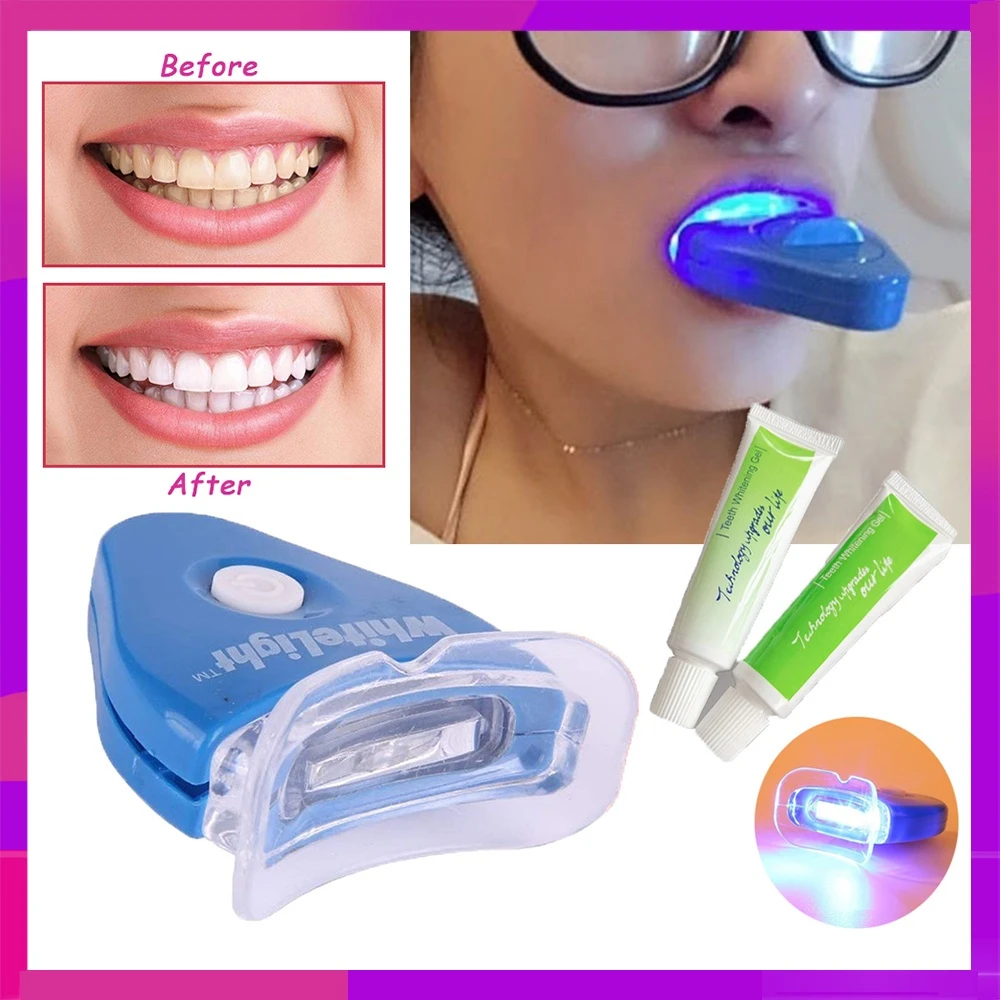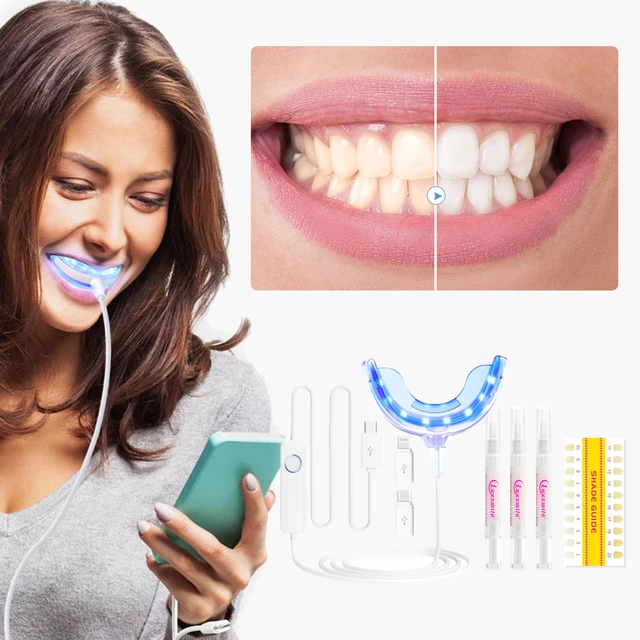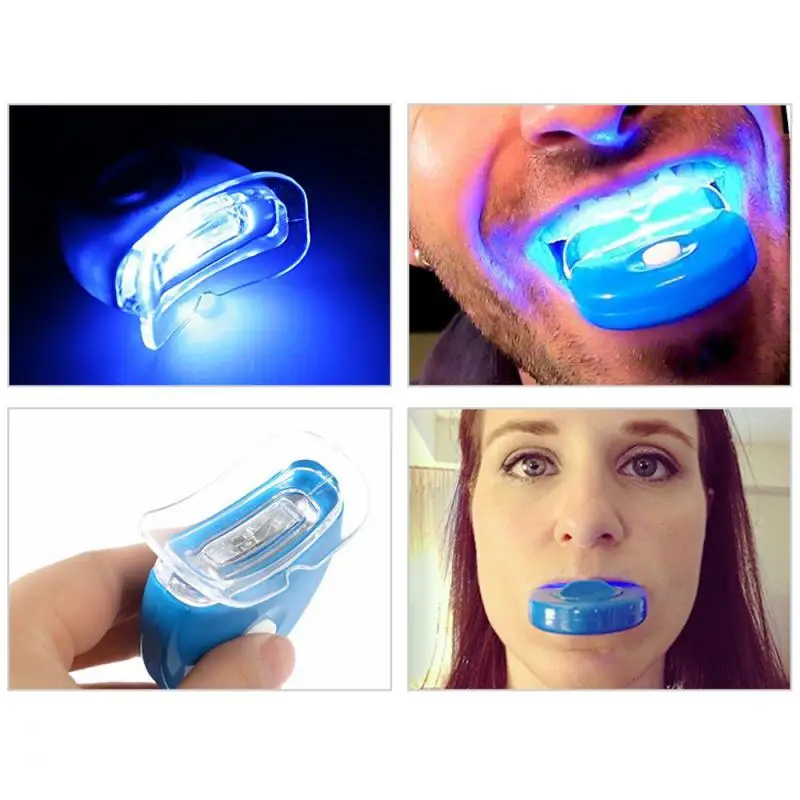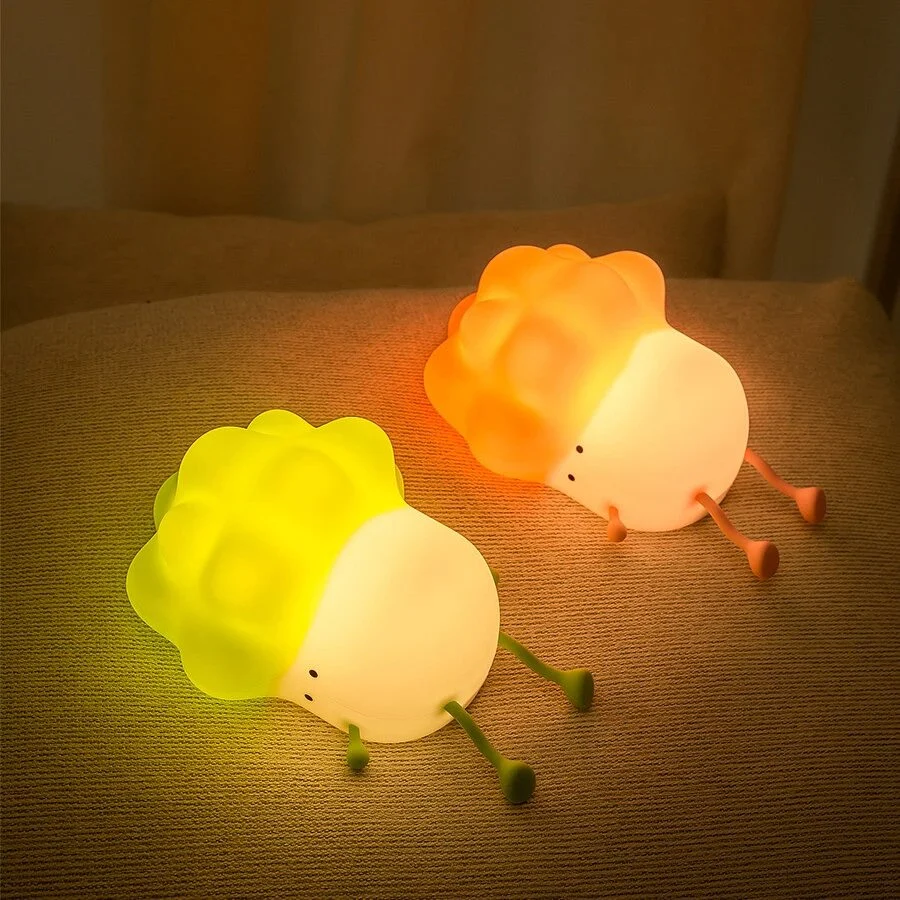Teeth whitening has become a popular cosmetic procedure for achieving a brighter smile. Among the various methods available, LED light whitening kits have gained popularity due to their ease of use and effective results. However, understanding how often you can safely use these whitening kits is important for avoiding potential side effects and maintaining oral health. This comprehensive guide will explore the frequency of LED light teeth whitening, its benefits, potential risks, and best practices.
 What is LED Light Teeth Whitening?
What is LED Light Teeth Whitening?
How It Works
LED Technology: LED light teeth whitening uses a combination of a whitening gel and LED light to accelerate the bleaching process. The gel, usually containing hydrogen peroxide or carbamide peroxide, breaks down stains on the teeth.
Activation: The LED light enhances the effectiveness of the whitening gel by speeding up the chemical reaction that lifts stains.
Treatment Duration: Sessions typically last 10-30 minutes, and a complete treatment may require multiple sessions over several days or weeks.
Benefits
Quick Results: LED light teeth whitening can produce noticeable results within a short period.
Convenience: Many LED whitening kits are designed for home use, offering convenience and privacy.
Effectiveness: This method is effective at removing both surface stains and deeper discoloration.
Frequency of LED Light Teeth Whitening
Manufacturer’s Recommendations
Initial Treatment Period: Most LED whitening kit manufacturers recommend an initial treatment period of 7-14 days, with daily sessions lasting from 10 to 30 minutes.
Maintenance Sessions: After the initial treatment, maintenance sessions are typically suggested every 4 to 6 weeks to maintain the whitening results.
Dentist’s Advice
Professional Guidance: It’s always best to consult with a dentist before beginning any whitening regimen. A dentist can evaluate your oral health and recommend an appropriate frequency based on your needs.
Customized Plans: Dentists can provide customized whitening plans that may involve in-office treatments followed by at-home maintenance using LED kits.
Personal Experience
Monitoring Results: Pay attention to how your teeth respond to the whitening process. If you experience sensitivity or gum irritation, reduce the frequency of use.
Adjusting Frequency: Based on the results and side effects, you may need to adjust the frequency of your whitening sessions. It’s important not to overuse the product, as excessive use can damage your teeth and gums.
 Potential Risks and Side Effects
Potential Risks and Side Effects
Tooth Sensitivity
Common Issue: Increased tooth sensitivity is a common side effect of teeth whitening. This occurs because the whitening agents can penetrate the enamel and reach the nerves inside the tooth.
Management: If you experience sensitivity, reduce the frequency of use or choose a whitening gel specifically formulated for sensitive teeth.
Gum Irritation
Cause: Whitening gels can cause irritation if they come into contact with the gums. This can result in redness, swelling, or soreness.
Prevention: Apply the gel carefully, avoiding the gum area. Use a whitening tray that fits well to minimize contact with the gums.
Enamel Damage
Risk: Overuse of whitening products can erode the enamel, making teeth more vulnerable to decay and sensitivity.
Avoid Overuse: Stick to the recommended frequency and duration of use. Consult with a dentist if you have concerns about enamel damage.
Best Practices for LED Light Teeth Whitening
Preparing for Whitening
Clean Teeth: Brush and floss your teeth before using the whitening kit to remove plaque and ensure even application of the gel.
Follow Instructions: Carefully read and follow the manufacturer’s instructions for the whitening kit. Incorrect use can lead to ineffective results or side effects.
Patch Test: Perform a patch test on a single tooth or a small area first to ensure you don’t have an adverse reaction to the whitening gel.
During Whitening
Proper Application: Apply the whitening gel evenly across the teeth. Avoid contact with the gums.
Use Timer: Use a timer to ensure you don’t exceed the recommended duration for each session.
Comfort Measures: Use desensitizing toothpaste or gels if you experience sensitivity during the treatment.
After Whitening
Rinse Thoroughly: Rinse your mouth and the whitening tray thoroughly to remove any residue.
Avoid Stain-Causing Foods: For 24-48 hours after whitening, avoid foods and drinks that can stain teeth, such as coffee, tea, red wine, and berries.
Hydrate: Drink plenty of water to help wash away any potential stain-causing agents.
 Maintaining Whitening Results
Maintaining Whitening Results
Routine Oral Care
Brush Regularly: Brush your teeth at least twice a day with a fluoride toothpaste.
Floss Daily: Floss daily to remove plaque and prevent buildup between teeth.
Mouthwash: Use an antibacterial mouthwash to help maintain oral hygiene and reduce the risk of staining.
Professional Cleanings
Regular Checkups: Visit your dentist regularly for professional cleanings and checkups. This helps maintain oral health and prolong whitening results.
Touch-Up Treatments: Consider professional touch-up treatments as recommended by your dentist to maintain the brightness of your smile.
Comparing LED Light Whitening with Other Methods
Professional In-Office Whitening
Procedure: Performed by a dentist, this method uses stronger whitening agents and advanced technology for faster results.
Frequency: Professional treatments are usually done every 6 to 12 months, depending on individual needs.
Pros: Quick and effective results with professional supervision.
Cons: More expensive than at-home LED whitening kits.
At-Home Whitening Strips
Procedure: Whitening strips are applied to the teeth and left for a specific period to lift stains.
Frequency: Typically used once a day for 10-14 days.
Pros: Easy to use and relatively affordable.
Cons: Less effective than LED whitening and can cause uneven whitening if not applied correctly.
Whitening Toothpastes
Procedure: These toothpastes contain mild abrasives and whitening agents to remove surface stains.
Frequency: Used as part of daily oral care routine.
Pros: Convenient and helps maintain whitening results.
Cons: Gradual and less noticeable results compared to LED whitening.
 Choosing the Right LED Whitening Kit
Choosing the Right LED Whitening Kit
Factors to Consider
Strength of Whitening Agents: Check the concentration of hydrogen peroxide or carbamide peroxide in the gel. Higher concentrations are more effective but can cause more sensitivity.
LED Light Quality: Look for kits with high-quality LED lights that provide consistent and effective illumination.
Tray or Applicator Fit: Ensure the kit includes a well-fitting tray or applicator for even distribution of the whitening gel.
Ease of Use: Choose a kit with clear instructions and an easy-to-use design.
Popular Brands
GLO Science: Known for its high-quality LED light technology and effective whitening gel. Also offers options for sensitive teeth.
AuraGlow: Popular for its affordability and effectiveness. Offers a variety of kits with different strengths and features.
Crest 3D White: Offers an LED whitening kit that complements its well-known whitening strips. Known for ease of use and reliable results.
FAQs about LED Light Teeth Whitening
How Often Can I Use LED Light Teeth Whitening Kits?
Initial Period: Use daily for 7-14 days as per the manufacturer’s instructions.
Maintenance: Perform touch-up treatments every 4-6 weeks to maintain results.
Is LED Light Whitening Safe?
Generally Safe: When used as directed, LED light whitening is safe for most people. Always follow the instructions and consult a dentist if you have concerns.
Can I Use LED Whitening with Sensitive Teeth?
Sensitive Formulas: Look for whitening gels formulated for sensitive teeth. Reduce the frequency of use if you experience significant sensitivity.
What Should I Do If I Experience Side Effects?
Sensitivity: Use desensitizing toothpaste and reduce the frequency of treatments.
Gum Irritation: Carefully apply the gel, avoiding the gums. If irritation persists, consult a dentist.
 Conclusion
Conclusion
LED light teeth whitening is an effective and convenient method for achieving a brighter smile. However, it’s essential to use these kits correctly and adhere to recommended frequencies to avoid potential risks such as sensitivity and enamel damage. Always consult with a dental professional before starting any whitening regimen, choose high-quality kits, and follow best practices to ensure safe and effective whitening results. By understanding the process and taking proper care, you can enjoy a radiant smile while maintaining optimal oral health. Happy whitening!

